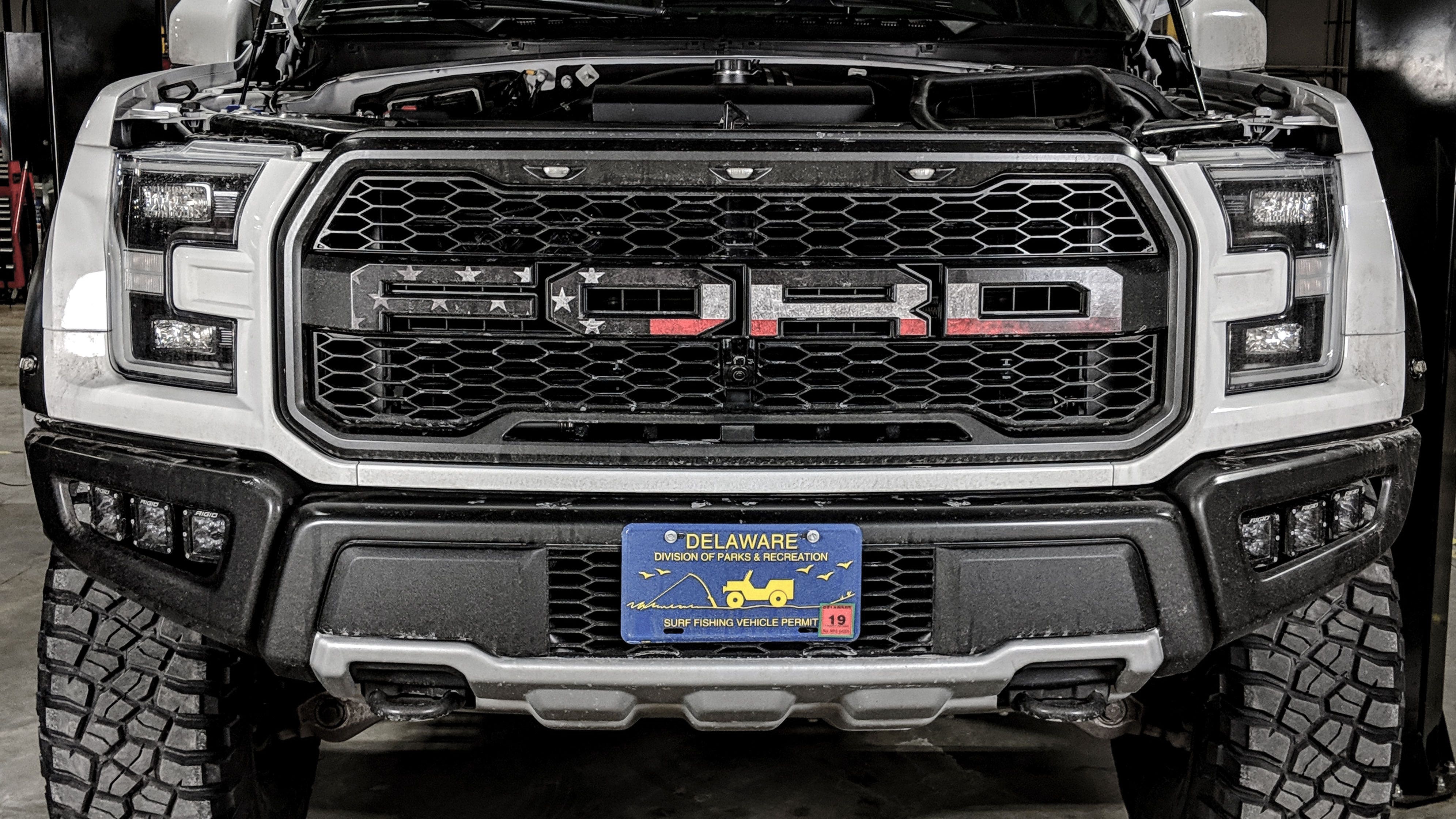
Everyday Hercules - Aluminum Radiator R&D, Part 3: Production
As summer begins here in Delaware, it's quickly becoming the season of trailers with boats, jet skis, and campers filling the roads. Most of those trailers are pulled behind massive, oversized trucks that look like they rolled off the showroom floor yesterday. While there's nothing wrong with taking pride in your truck and keeping it clean, my favorite thing to see on the road is the F-150 that still has the toolbox in the back and mud on the tires, towing an old aluminum fishing boat. The drivers of the shiny behemoths might scoff at it from a few feet up, but that F-150 has been that driver's Hercules. You know that truck and its owner have done some work.
Summer is also an opportune time to finish our 2015+ F-150 / 2017+ Raptor radiator. But before we move into the final phase of development, let's look at how we got here. Our first post in this series focused on the stock radiator. Much like our 2011-2014 F-150 radiator, we found that Ford offered multiple cooling options for the 2015+ F-150 and Raptor. Never ones to take the easy road, we decided to out-cool Fords most efficient radiator found in the 2017+ Raptor and some 3.5L EcoBoost F-150s.

We started development by measuring the stock radiators and sorting out which features needed to be carried on to our radiator. One of the bigger challenges would be incorporating an in-tank transmission cooler into the larger radiator. To find out if our design was feasible, we then created a prototype radiator using our 3D printers to make true-to-life end tanks. Our fabricator welded together an aluminum frame to act as the radiator core and we had a prototype.

Our previous post ended with a successful test fit of that prototype and the beginning of our wait for a production sample. With the arrival of spring came that very production sample and the final steps of development. Our production sample serves three purposes: confirm that the final product looks, fits, and performs flawlessly. The first criteria took only a few minutes to confirm. With over double the thickness of the stock Ford radiator, and over 50% more coolant capacity, our radiator looks fit for the legendary truck it will call home.
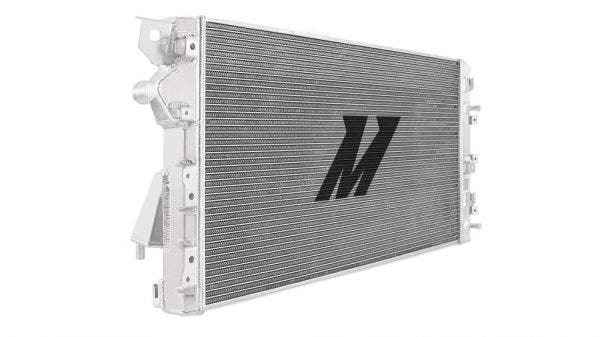
To check the fit of our radiator, we first needed a truck. Our prototype was test fit on a 2018 Raptor. What better truck to test the fit and function of radiator than the most powerful F-150 on the road? Once the Raptor was situated in our shop and cooled down, we removed the stock radiator to make room for our all-aluminum replacement. With the stock radiator out, we could finally install our massive replacement. Clearance in the Raptor's engine bay is certainly tight, but our engineer's attention to detail paid off and the radiator slipped in without a hitch.

The wonder of looking at our radiator securely installed on the Raptor was short lived, however, as the next (and final) step required its prompt removal and reinstallation of the stock unit. Dan and Ye topped off the Raptor's coolant and drove it the 200ft to our Dynapack™ hub dynos. There they installed an array of sensors to measure the inlet and outlet coolant temperatures and connected them to our AEM AQ1 data logger.
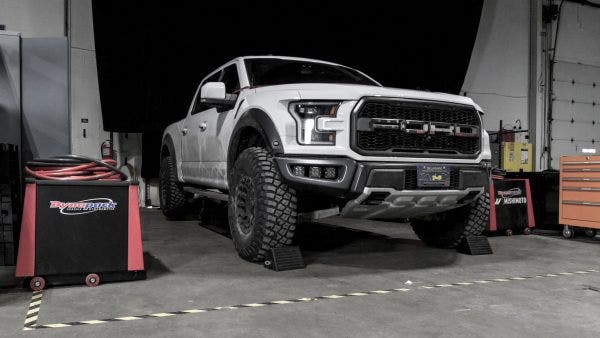
Our Dynapacks are the ideal tool to test a truck radiator like this. They allow us to load the hubs as if the truck is carrying a heavy load. The Dynapacks are the closest you can get to real-world driving without having to worry about traffic or weather skewing results.
We would be performing two tests each with both the stock radiator and our performance replacement. The tests would be performed with the cooling system at operating temperature and within the same day to keep an apples-to-apples comparison. The goal of both tests would be to heat-soak the radiators and measure their ability to shed that heat. First up on the dyno was the stock radiator to give us a baseline.
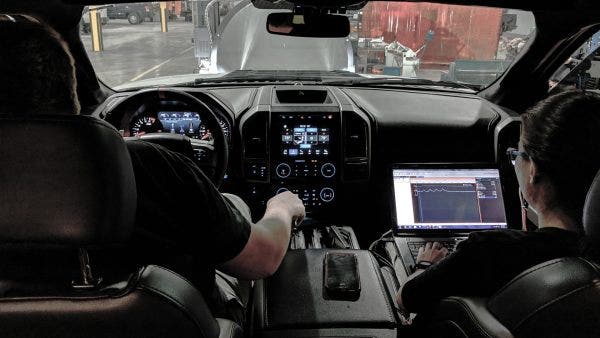
As the coolant reached operating temperature and the thermostat opened, Dan began the first test while Ye watched the sensor outputs on the laptop. Our first test was a loaded peak-hold test. Dan brought the Raptor's 3.5L high-output engine up to highway RPM under load from the Dynapacks. He held that RPM for 45 seconds to heat the radiator, then let it cool. Later, we'll compare the rate at which each radiator heats up and cools off.
The next test was a cycle test to really push the radiators to their limit. In this test, Dan ran a series of four wide-open-throttle runs for 15 seconds each. He let the engine idle for one minute between runs to let the engine cool slightly without coming all the way back to its base operating temperature. This testing simulates towing up hills or back-to-back drag races and is incredibly taxing on the cooling system.
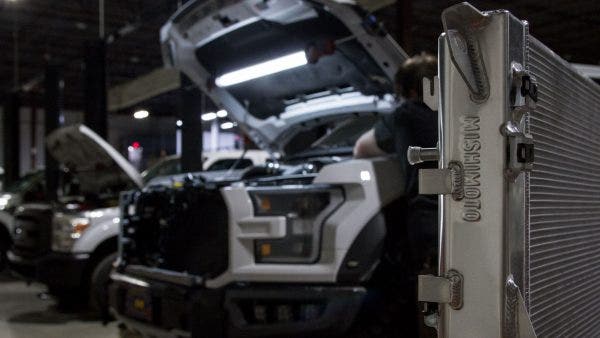
With both tests complete on the stock radiator, we let the Raptor cool down enough to swap the radiators, and then repeated the tests with the Mishimoto replacement. After running both tests on the Mishimoto radiator, we gathered our testing equipment and headed back into the office to crunch the data.
Unsurprisingly, our radiator significantly outperformed the stock unit. In the peak-hold test, our radiator took longer to heat up and its peak outlet temperature was 10*F lower than the stock unit. Our radiator also shed the heat and cooled the system faster than the stock radiator.
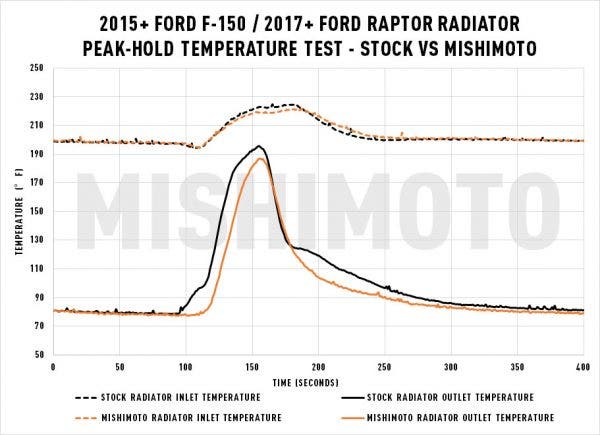
The cycle testing revealed the same performance. Over the four runs, our radiator showed a significantly greater resistance to heat-soak, with its peak outlet temp coming in a whopping 37*F lower than the stock radiator. Our radiator also brought coolant temps much closer to the ambient air's temperature during the short cooldown periods.
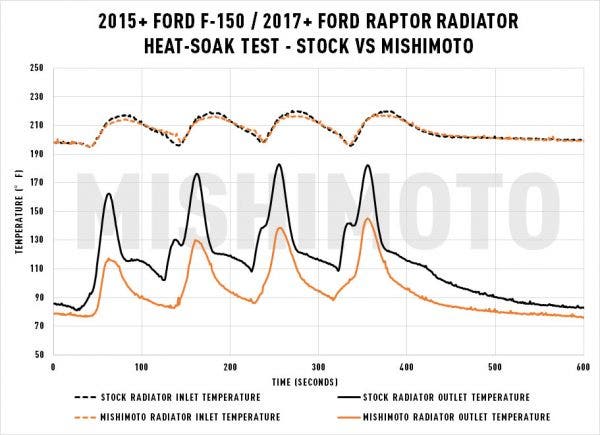
We soaked in the feeling of success as we let the Raptor cool down and began removing the Dynapacks. Our radiator checked all the boxes of a radiator fit for a herculean truck and did it all while fitting and looking great. With the 2018 Raptor's taillights passing through our shop's doors, we close our R&D on this 2015+ Ford F-150 / 2017+ Raptor radiator.
But, it's not all over. Now is your chance to get this radiator for your everyday Hercules at a deep discount. Check out our website for details on the pre-sale and, as always, let us know what you think.




